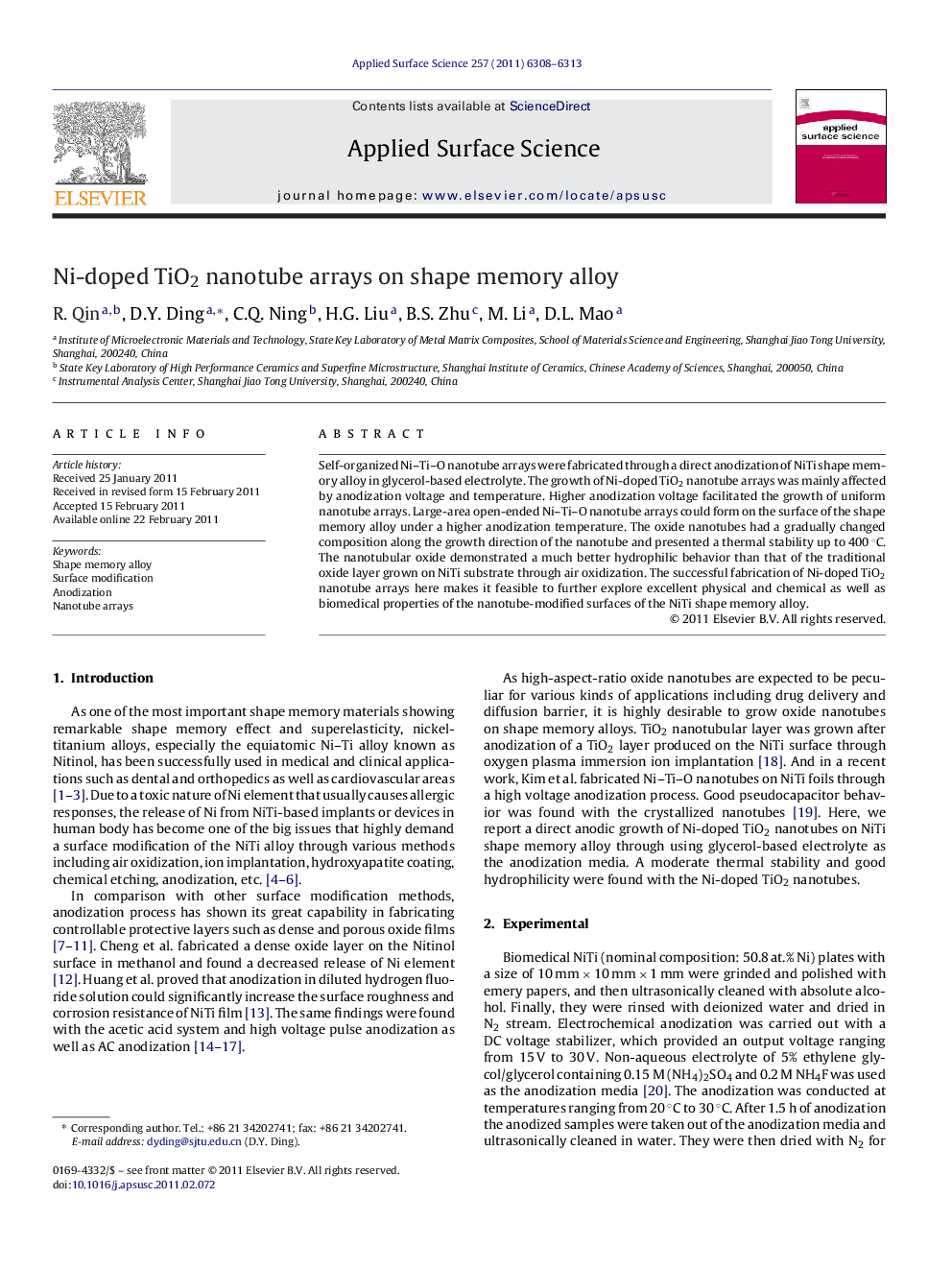| Article ID | Journal | Published Year | Pages | File Type |
|---|---|---|---|---|
| 5367716 | Applied Surface Science | 2011 | 6 Pages |
Self-organized Ni-Ti-O nanotube arrays were fabricated through a direct anodization of NiTi shape memory alloy in glycerol-based electrolyte. The growth of Ni-doped TiO2 nanotube arrays was mainly affected by anodization voltage and temperature. Higher anodization voltage facilitated the growth of uniform nanotube arrays. Large-area open-ended Ni-Ti-O nanotube arrays could form on the surface of the shape memory alloy under a higher anodization temperature. The oxide nanotubes had a gradually changed composition along the growth direction of the nanotube and presented a thermal stability up to 400 °C. The nanotubular oxide demonstrated a much better hydrophilic behavior than that of the traditional oxide layer grown on NiTi substrate through air oxidization. The successful fabrication of Ni-doped TiO2 nanotube arrays here makes it feasible to further explore excellent physical and chemical as well as biomedical properties of the nanotube-modified surfaces of the NiTi shape memory alloy.
Research highlights⺠Anodization of NiTi shape memory alloy. ⺠Growth of Ni-doped nanotubes on the surface. ⺠Moderate heat-treatment to keep nanotubular structures. ⺠The nanotubular oxide demonstrates a good hydrophilicity.
